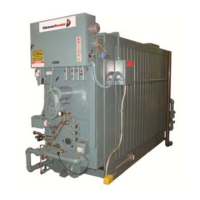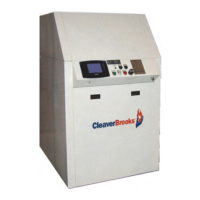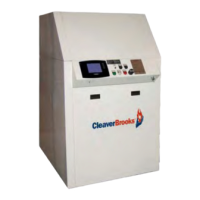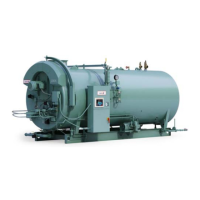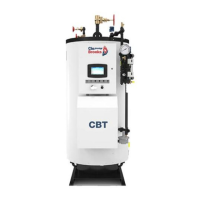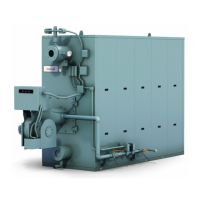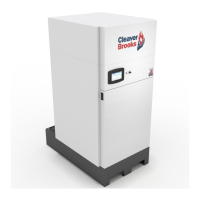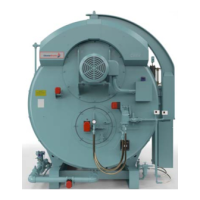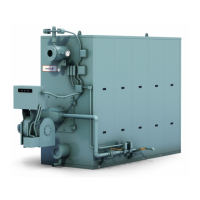Sequence of Operation
4-6
750-211 (revised 2009)
Promethean Boilers, Model 4WI Manual
The control will prevent startup or ignition if limit circuit controls or fuel valve interlocks are open. The control
will lockout upon any abnormal condition affecting air supervisory controls wired in the running interlock circuit.
1. No Pilot Flame: The pilot flame must be ignited and proven within a 10-second period after the ignition cycle
begins. If not proven within this period, the main fuel valve circuit will not be powered and the fuel valve(s) will
not be energized. The ignition circuit is immediately de-energized and the pilot valve closes, the reset switch
lights and lockout occurs immediately.
The blower motor will continue to operate. The flame failure light and the alarm bell (optional) are energized 10
seconds later.
2. The Blower Motor Will be De-energized: The lockout switch must be manually reset before operation can
be resumed.
3. Pilot But No Main Flame: When the pilot flame is proven, the main fuel valve circuit is energized. Depending
upon the length of the trial-for-ignition period, the pilot flame will be extinguished 10 or 15 seconds later. The
flame detecting circuit will respond to de-energize the main fuel valve circuit within 2 to 4 seconds to stop the
flow of fuel. The reset switch lights and lockout occurs immediately. The blower motor will continue to operate.
The flame failure light and alarm bell (optional) are energized 10 seconds later.
The blower motor will be de-energized. The lockout switch must be manually reset before operation can be
resumed.
4. Loss of Flame: If a flame outage occurs during normal operation and/or the flame is no longer sensed by the
detector, the flame relay will trip within 2 to 4 seconds to de-energize the fuel valve circuit and shut off the fuel
flow. The reset switch lights and lockout occurs immediately. The blower motor continues operation. The flame
failure light and alarm bell (optional) are energized 10 seconds later.
The blower motor will be de-energized. The lockout switch must be manually reset before operation can be
resumed.
If the burner will not start, or upon a safety lockout, the troubleshooting section in the operating manual and the
technical bulletin should be referred to for assistance in pinpointing problems that may not be readily apparent.
The program relay has the capability to self-diagnose and to display a code or message that indicates the failure
condition. Refer to the control bulletin for specifics and suggested remedies. Familiarity with the program relay and
other controls in the system can be obtained by studying the contents of the manual.
Knowledge of the system and its controls will make troubleshooting much easier. Costly downtime or delays can be
prevented by systematic checks of the actual operation against the normal sequence to determine the stage at which
performance deviates from normal. Following a routine may possibly eliminate overlooking an obvious condition,
often one that is relatively simple to correct.
The lockout switch must be manually reset following a safety shutdown. The cause for loss of flame or any unusual
condition should be investigated and corrected before attempting to restart. Failure to follow these instructions could
cause damage to the equipment.
!
Caution
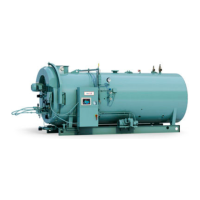
